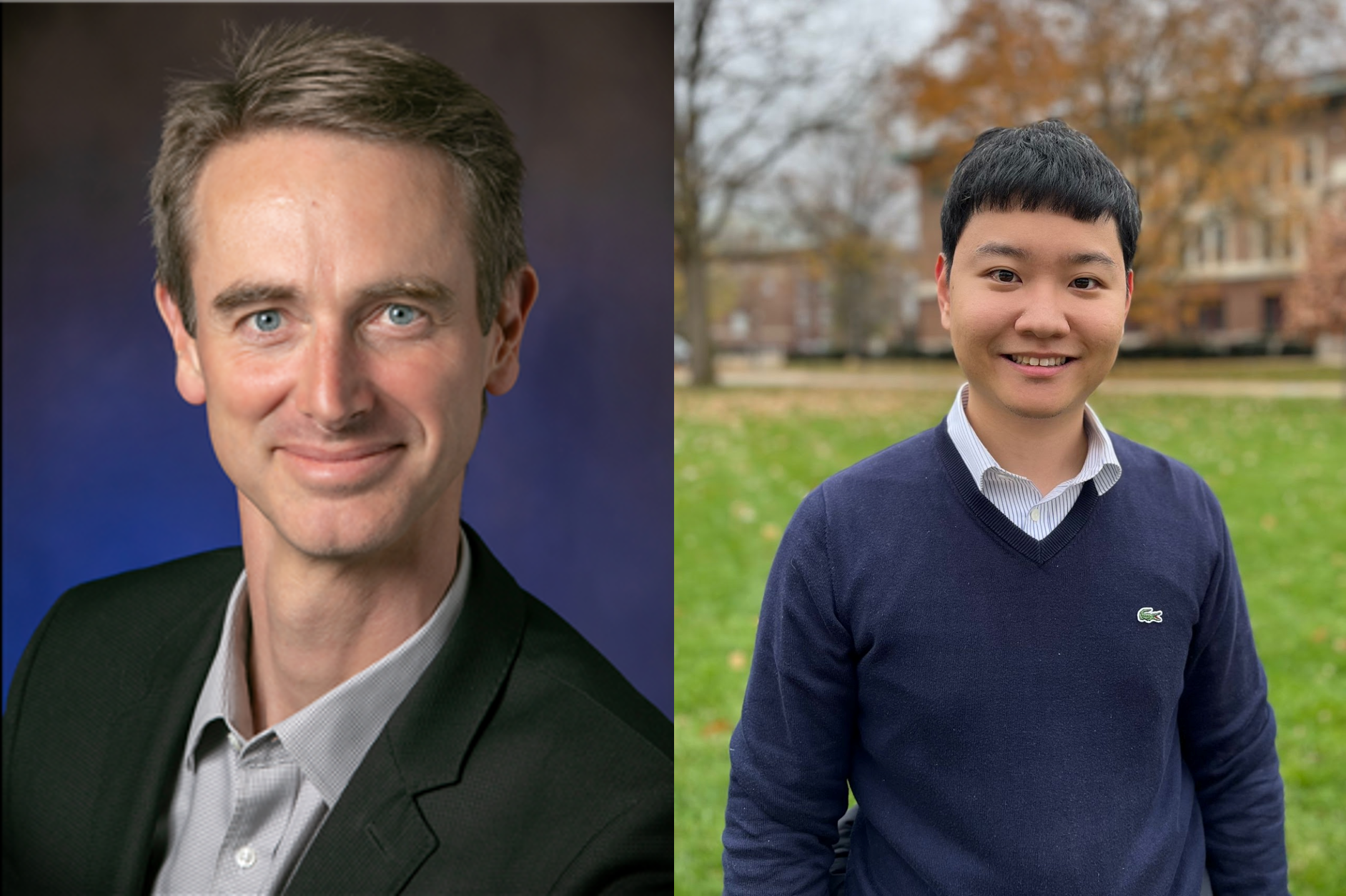Due to the diffusion and temperature gradients generated by the template, self-assembled solidifying eutectic materials guided by a small feature template exhibit distinct microstructures and patterns. The template attempts to push the material to solidify into a regular pattern. Still, excessive heat from the template can potentially disrupt the solidification process and result in disorder in the long-range pattern.
 Paul Braun (left) and Sung Bum Kang (right). Image Credit: University of Illinois Urbana-Champaign
Paul Braun (left) and Sung Bum Kang (right). Image Credit: University of Illinois Urbana-Champaign
Researchers from the University of Michigan Ann Arbor and the University of Illinois Urbana-Champaign have created a template material that almost conducts no heat, preventing heat transmission from the template material to the hardening eutectic material. By creating the template from a material with extremely poor heat conductivity, this was made possible, and the end product was highly ordered self-assembled microstructures.
The key novelty of this research is that we carefully controlled the flow of heat. By controlling the flow of heat, the pattern becomes far better and more regular than before because we are controlling more of the parameters. Previously, the template controlled the flow of atoms, but the heat flows were uncontrolled.
Paul Braun, Professor and Grainger Distinguished Chair in Engineering, The Grainer College of Engineering, University of Illinois Urbana-Champaign
The journal Advanced Materials just published the research’s findings.
The homogenous mixture known as eutectic materials has a melting point that is lower than the melting point of any individual ingredient. Solder, a combination of lead and tin, and salt (sodium chloride) and water mixes are typical examples of eutectic systems. Eutectic mixes split into two components that produce a pattern at the solidifying front when they cool from the liquid phase.
There are more than simply two large layers in the material. Instead, it creates formations that resemble tiers of cake, rod-like structures, or even more intricate structures. These structures are called lamellar structures.
However, the material’s resultant microstructure is only well organized across small distances. The self-assembly process can give rise to instabilities that result in microstructure flaws and impact the characteristics of the final solid material. Optics and mechanical applications in particular often need exceptionally high order across vast distances.
A set of pillars that impede the flow of atoms and molecules can serve as a template to regulate the solidification process. As a result, as the structure hardens, it is forced to create a more regular pattern. However, the problem, as Braun stated, is that the pillars retain a lot of heat, which causes the front to become complicated in shape rather than flat and hardening. Long-range disorder and uneven patterns result from this.
Braun added, “We figured out how to make the pillars so that they were really good insulators. So, all of the heat is only flowing through the material that’s solidifying. The template is now only acting as a barrier to the flow of atoms, but almost no heat is moving between the solidifying material and the template.”
Low thermal conductivity template materials produced highly ordered microstructures with long-range order, according to the researchers’ exploration of these materials in comparison to the eutectic system.
They specifically utilized porous silicon, which is at least 100 times less thermally conductive than crystalline silicon and is effectively a silicon foam. The “wrong” direction of heat flow is reduced by the poor thermal conductivity of the template material.
The thermal conductivity of the template is a critical factor in determining the rate of heat transfer during the solidification process. The porous silicon we used for the templates have a low thermal conductivity and led to about 99% uniformity of the unit cells of the structure. In comparison, with higher thermal conductivity crystalline silicon pillars, the expected pattern is only present in 50% of the unit cells. This means we can design eutectic materials with highly predictable and consistent properties. This level of control is crucial for applications where uniformity directly impacts performance.
Sung Bum Kang, Postdoctoral Research Associate, University of Illinois Urbana-Champaign
Paul Braun is also affiliated with the Beckman Institute for Advanced Science and Technology at UIUC, the Department of Chemical and Biomolecular Engineering, the Department of Mechanical Science and Engineering, and the Department of Chemistry.
Guanglong Huang (department of materials science and engineering, University of Michigan), Gaurav Singhal (department of materials science and engineering, Materials Research Laboratory, UIUC), Dajie Xie (department of materials science and engineering, Materials Research Laboratory, UIUC), Daniel H. Hsieh (department of mechanical science and engineering, UIUC), Youngmun Lee (department of mechanical science and engineering, UIUC), Ashish A. Kulkarni (Center for Functional Nanomaterials, Brookhaven National Laboratory), John W. Smith (department of materials science and engineering, Materials Research Laboratory, UIUC), Qian Chen (department of materials science and engineering, department of chemical and biomolecular engineering, Materials Research Laboratory, UIUC), Katsuyo Thornton (department of materials science and engineering, University of Michigan) and Sanjiv Sinha (department of mechanical science and engineering, UIUC are the other contributors to the study.
The Army Research Office provided funding for this study.
Journal Reference:
Kang, S. B., et. al. (2024) Highly Ordered Eutectic Mesostructures via Template-Directed Solidification within Thermally Engineered Templates. Advanced Materials. doi:10.1002/adma.202308720.